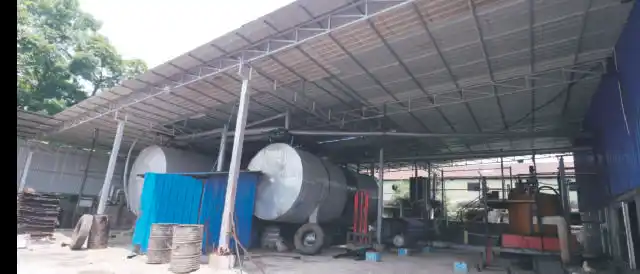Cold mix technology
A cold mix is defined as a mixture of customized or tailor made bitumen emulsion and non heated aggregate.
The most widespread method of rural road construction is the one in which the aggregate and bitumen is heated up to 150°C. In hot mix technology, it is difficult to maintain the desired temperature at every stage. Failing to maintain these temperatures could affect durability of the pavement. High rainfall, high altitude and cold weather conditions, long distance between hot mix plant and project site, are some of the challenges faced during the construction of avements.
Cold mix technology addresses all these problems. It is made up of Tailor made bitumen emulsion cold binder that allows construction in all seasons.
The Cold mix technology came into existence in the early 1900s and its application as a pavement was first started in the 1920s. In India, the use of cold mix first started in the 1970s, by that time the world had started using it in various fields of construction and maintenance of roads. Bitumen emulsion cold binder makes it possible for mixing and laying down the pavement at ambient temperature.
Design elements of cold mix
- Coating: The cold binder should have ability to coat the aggregate effectively without balling of fines.
- Work-ability: The mixture must maintain its work-ability during production and laying and storage.
- Run-off: The design should ensure that the cold binder run-off from mixture will not occur. For open graded mixes, it is important that the cold binder doesn’t drain though the voids in aggregate.
- Aggregate quality: The sand equivalent value test shall be carried out to ensure that clay content is not in excess. A sand equivalent value 9 as per IS: 2720) of 50 and above is preferred.
- Bitumen content: The amount of residual bitumen required in the mix is determined based on the surface area of the aggregate and typically varies between 4 to 6 percent by weight of dry aggregate depending upon gradation selected.
- Moisture susceptibility: For moisture susceptibility of the mix to intrusion of water, boiling or immersion tests may be used in conjunction with coating by visual observations.
- Strength: Progressive strength gain can be determined using Marshall Stability Tests. Minimum strength requirements will be set by the design criteria depending upon the type of mixture (Open graded/dense graded).
Cold mix procedure for ogpc (open graded premix carpet)
The Cold mixed OGPC can be prepared in a concrete mixer. Firstly, the surface shall be dirt and dust free, loose materials if any, should be removed. Apply prime coat over this clean surface. The blended aggregate of 13.2 mm and 11.2 mm size in 2:1 ratio shall be charged into concrete mixer. The premixing water content @ 1 to 2 percent by weight of aggregate shall be added (if needed) into the mixer and uniformly mixed to wet the aggregate surface. The required quantity of ESMUL COLD BINDER shall then be added and mixed with aggregate for two minutes for uniform coating. Prolong mixing shall be avoided as it tends to de-coat the binder from aggregate. The cold mix while indicating brown colour shall be discharged into trolleys to transport to the construction site. Tack coating, spreading of cold mix and compaction of cold mix with 8-10 tonne roller shall be carried out to get the finished premix carpet surface.
Esmul economics
Production of cold asphalt mix does not require high investment in equipment, which makes it economical. It is also suitable for emote areas. Cold asphalt mixes can be used for initial construction and for recycling of asphalt pavements.
Slurry seal and microsurfacing can also be considered as cold mixes although used as surface treatment.
Advantages of cold mix
- Cold application technology
- Eliminates heating
- Environment friendly technology
- Energy conservation
- Coats damp aggregates
- It’s a green technology as no heating of aggregate and cold binder is required emitting zero pollution
- No adverse effect on the health of workers
- Friendly to local women construction workers
- Higher progress, faster connectivity, avoids escalation
Delivery promise
- Round the year availability of stocks.
- Consistent quantity and quality (Q & Q) for every load.
- Hassel free commercials ensures minimization of lead time.
Hot mix vs cold mix technology
Hot mix
- High level of noise and air pollution
- Emission of green house gases
- The quality of bitumen gets effected during heating
- Unsafe for the maintenance crew
Cold mix
- It controls air pollution
- Heating of binder and aggregate is eliminated
- The thermal oxidative hardening of bitumen is checked, thus increasing the service life of the pavement.
- Ease in handling and laying of road surface, thus increasing the work out put.
Health and safety
Emulsions are unlikely to present any significant health or safety hazard when properly used in the recommended application and good standards of industrial and personal hygiene are maintained. Avoid contact with skin. Use protective clothing i.e. coveralls, gloves, boots, neck and face protectors.








